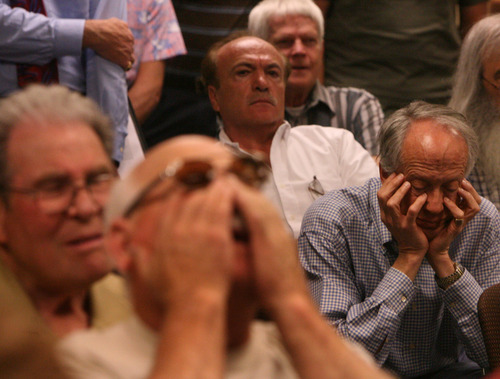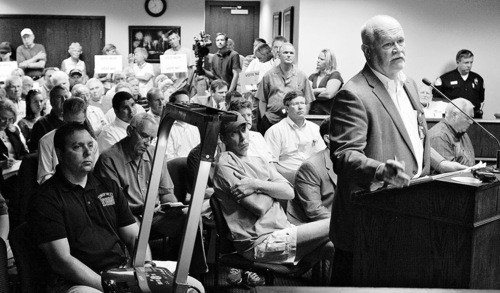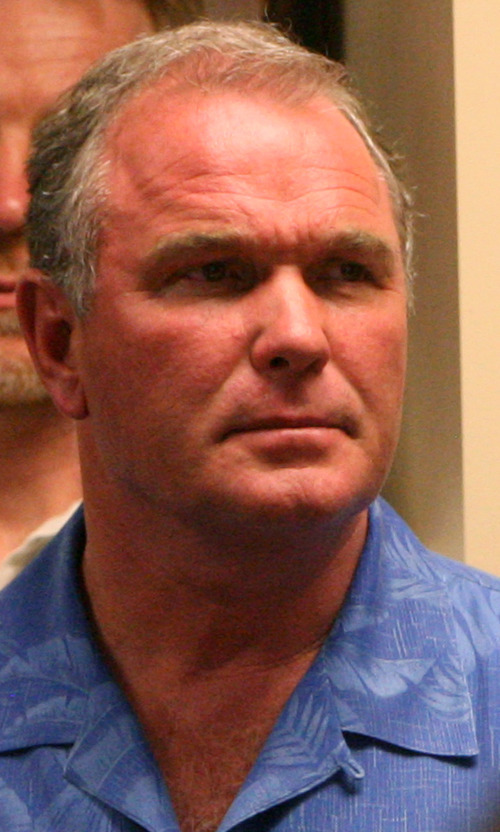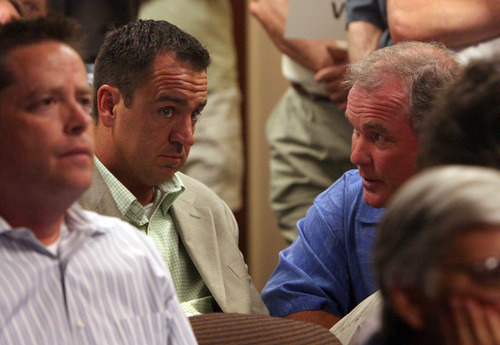This is an archived article that was published on sltrib.com in 2011, and information in the article may be outdated. It is provided only for personal research purposes and may not be reprinted.
Cottonwood Heights • Representatives for developer Terry Diehl spoke to a packed room Tuesday as the City Council heard details of the mixed-use Tavaci resort he hopes to build near the mouth of Big Cottonwood Canyon.
Diehl's dream includes a 125-room hotel, condos, restaurants, bars, office space and other retail amenities.
Using an "equivalent residential use" formula, Diehl pledges to build no more than 200 units until a second road can be builtto access his property.
Rep. Greg Hughes, R-Draper, spoke on behalf of Diehl's plan to place up to 286 equivalent units on his 47 buildable acres once a second road could be built. Hughes said he was speaking in his capacity as chairman of Utah Transit Authority's board of directors, not as a lawmaker.
"We have just under 3 million residents living in our state," Hughes said. "By 2040, we'll have in excess of 3 million living along the Wasatch Front alone."
A projected one-third will live on just 3 percent of the land mass, Hughes added.
"UTA believes that transit-oriented or transit-adjacent development will help absorb some of that high density," Hughes said. "We as a community have got to come to terms with this and embrace it."
State transportation stakeholders project a transit hub by 2040 will be built on nearby gravel pit land that would accommodate buses and possibly light rail.
Until recently, Diehl served on UTA's board with Hughes. He officially resigned last week.
Before Cottonwood Heights incorporated in 2005, Diehl received approval from Salt Lake County to build 43 one-acre homes on his property.
Most of Tuesday's crowd preferred that Diehl stick with his original subdivision, which allowed latitude for half-acre lots and perhaps twice as many houses.
Abey Baraghoshi, who owns his own construction company, purchased one of Diehl's lots.
"I am against this [resort] project," Baraghoshi said. "I did not think it would come to this. It's a beautiful place. I wanted to be there. I had the opportunity to buy a lot and I did, but now they want to take it away from me."
Before the council session, about 40 people rallied in front of city offices against the zone change that would pave the way for the mountaintop resort.
Jim Thuet, a resident who said he will run for the District 2 City Council seat this year, was among the protesters.
"We need more integrity in this government, and we need to protect our hillsides," Thuet said.
A trail of emails revealed behind-the-scenes work by former Councilman Bruce Jones in 2009 to get Diehl's zone change through the Planning Commission. Jones, who also serves as UTA's general counsel, fell short of his goal to gain City Council approval before his council term ended that year.
Brian Homer was one of 13 residents appointed to a citizens committee in 2010 to scrutinize the new zone. They eventually concluded that it was not suitable for Diehl's property.
"We made it clear in our report that what he wanted to do was against the wishes of the citizens," Homer said in an interview before the council meeting.
Bruce Baird, Diehl's attorney, said a team of professionals had worked hard to address the city's concerns about height, density, hillside views and traffic.
In recent weeks, Diehl modified the proposed zone change to reduce building heights from as high as 90 feet to a maximum of 50, with ridge line homes rising only to 25 feet.
A study showed that the high-density development would have no impact on traffic through the canyon, Baird told the council.
Claire Geddes, a longtime government watchdog, scoffed at that notion.
"It's fairy land when you talk about no impact on the roads," Geddes said. "Give me a break — are we going to beam these people up there? That's just lunacy."
The council made no decisions Tuesday, but probably will vote in August when all members can be present.















